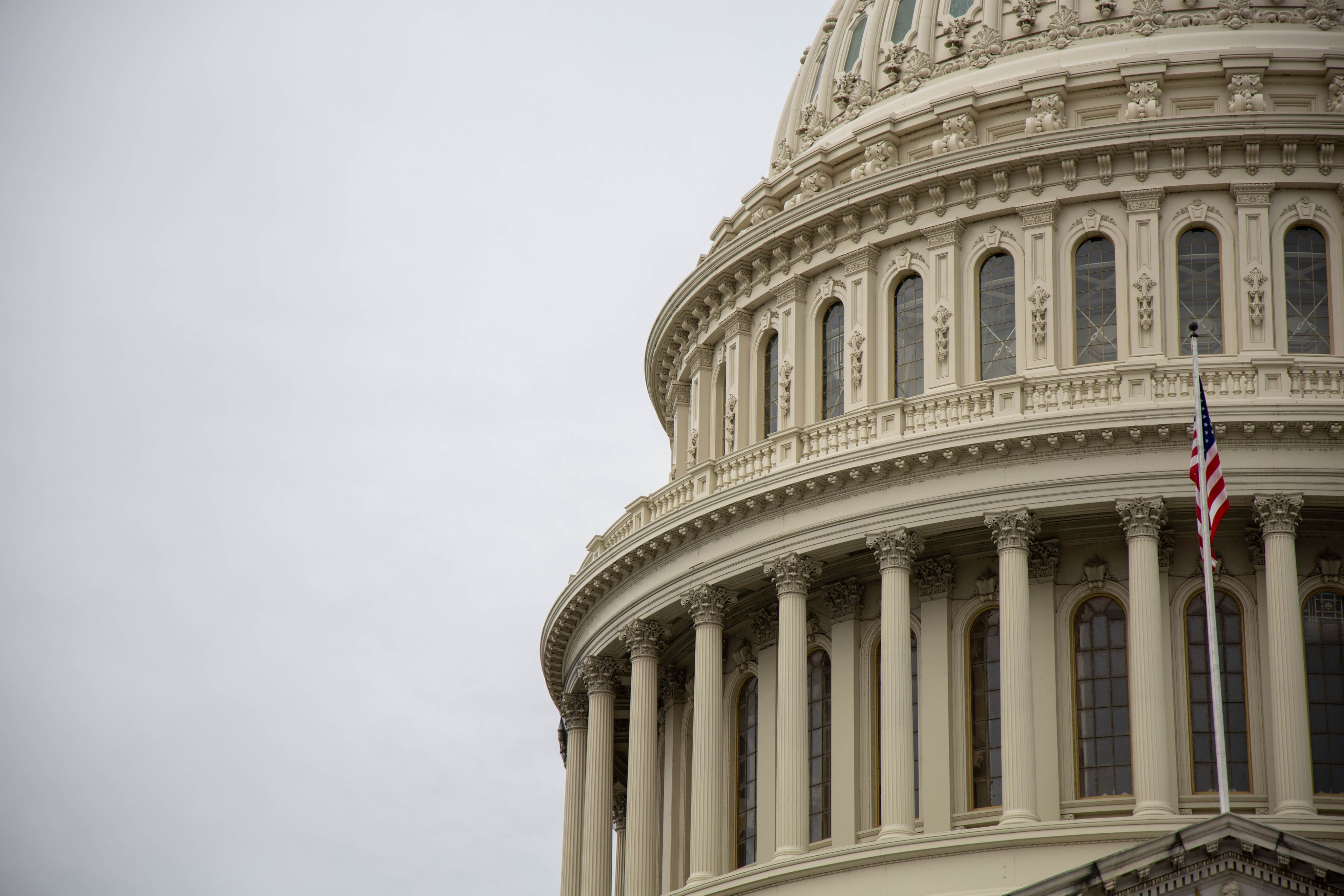Recommendation #4
Consider the potential for impact, flexibility, and sustainability in leveraging new and existing resources to support children and families.

“We need to go beyond making resources available to families to making sure they are sustained and accessible to those who need them.”
In recent years, the child welfare field saw incredible momentum for change — and funding — from the federal government to bolster families. In 2018, the Family First Prevention Services Act (FFPSA) was enacted to refocus the child welfare system on keeping children safely with their families to mitigate the trauma of separation for children. To strengthen existing family units, FFPSA authorizes increased access to supports, including mental health services and substance use treatment. FFPSA signaled a shift to a more ecological approach to child protection.
In response to the COVID-19 pandemic, Congress delivered key investments in relief packages, including the Coronavirus Aid, Relief, and Economic Security Act; the Coronavirus Response and Relief Supplemental Appropriations Act; and the American Rescue Plan Act, which included more than $1.9 trillion to help families and the nation recover and rebuild from the economic and health crisis precipitated by the COVID-19 pandemic. Among the provisions in the American Rescue Plan related to family well-being are an expanded and refundable child care tax credit, $39 billion in grants for child care providers, $1 billion for the Head Start program, and increased funding to support child care services for families with low incomes. With its commitment to racial equity, the Biden-Harris administration plans to build on the law, making temporary provisions permanent and adding unprecedented investments in “human infrastructure” systems, including those of early care and learning.
These various investments represent an enormous opportunity for the field to reimagine the child welfare system to one focused on prevention by directing resources toward programs that work for families.

Action Steps
How to Apply the Recommendation
Ensure greater access to funding opportunities for a diverse set of applicants.
Often only well-resourced organizations with the capacity to complete the application have access to funding opportunities. When the administrative process is too arduous or burdensome, those who could most benefit from enhanced resources may inadvertently be denied access because they do not have the bandwidth to complete the paperwork. As a result, the way resources are allocated can deepen inequities, miss desired target populations, and exclude organizations most proximate to those populations. Limiting the number of hoops an applicant must jump through, ensuring the language in the application is accessible to all potential applicants, and providing tangible examples of expectations for prospective applicants to reference are important steps toward making the process more equitable.
Decrease the administrative burden on families.
Families face multiple barriers to accessing public support programs and financial services such as tax credits, college savings accounts, and financial coaching. Examples of these barriers include confusing applications, long lines, and limited transportation options. These challenges are compounded when families must navigate multiple childhood systems that each operate in a different way.
Integrating systems across services and streamlining the application process will enable more families to access the supports they need. Research shows that improving the lives of people experiencing poverty requires shifting structures and processes to remove barriers — not changing people. Improving the way application processes are designed can remove barriers to access and increase participation in programs that have been shown to improve outcomes for families.
Mitigate the benefits cliff effect.
As federal and state dollars were made available for stimulus and COVID recovery, many families and organizations received temporary resources, including one-time payments. In some cases, an influx of cash can make families ineligible for certain benefits, often called the benefits cliff effect. As family advocates work to get needed resources to families, we must remain mindful of and work to avoid unintended consequences that can set families back rather than sustain them into the future.
Recommendation in Action
Federal Legislation

Family First Prevention Services Act (FFPSA)
The Bipartisan Budget Act of 2018 included the Family First Prevention Services Act. One of the most significant provisions of this law authorizes states, tribes, and territories to use Title IV-E funds for preventative services to support “candidates for foster care” and their families. Funds may be used for parent skill-based programs, mental health services, and substance use prevention and treatment services. Use of Title IV-E funds in this capacity is extended to pregnant or parenting foster youth. Prior to FFPSA, Title IV-E funds could only be used to help with costs of:
- Foster care maintenance for eligible children;
- Administrative expenses to manage the program;
- Training for staff;
- Foster parents and select agency staff;
- Adoption assistance; and
- Kinship guardian assistance.
Importantly, FFPSA deemphasizes congregate or group care for children in favor of kinship care. With limited exceptions, the federal government will no longer reimburse states for costs associated with placing children in group care settings for more than two weeks. In approved group settings, children must be formally assessed within 30 days of placement to determine if their needs can be met by family members.
In 2019, in recognition that the broader goals of FFPSA were not being realized, Congress passed the Family First Transition Act to encourage timely implementation of the law by providing financial relief for states that modernize their child welfare system to prioritize a prevention-focused infrastructure.
Families First Coronavirus Response Act
In 2020, the Families First Coronavirus Response Act was signed into law, marking the second major legislative initiative providing emergency funding relief related to COVID-19. Totaling nearly $3.5 billion, the Families First Act’s key provisions included paid leave, nutrition assistance, and unemployment benefits. The law was also designed to lift barriers that families often face when accessing supports. Highlights included:
- $500 million to the Department of Agriculture for the Special Supplemental Nutrition Program for Women, Infants, and Children (WIC);
- Permitting the secretary of agriculture to grant a request by a state agency to waive the physical presence requirement under WIC during recertification and defer anthropometric and bloodwork requirements necessary to determine nutritional risk;
- Lifting work and work training requirements for the Supplemental Nutrition Assistance Program (SNAP) program;
- Granting the secretary of agriculture authority to adjust SNAP benefit issuance methods and application and reporting requirements to be consistent with what is practicable under actual conditions; and
- Expansion of the Family and Medical Leave Act.
Coronavirus Aid, Relief, and Economic Security (CARES) Act
In 2020, President Trump also signed into law the Coronavirus Aid, Relief, and Economic Security (CARES) Act, marking the third and largest major legislative initiative to address COVID-19. The CARES Act contains a number of health-related provisions focused on the pandemic in the United States, including paid sick leave, insurance coverage of coronavirus testing, and nutrition assistance. Among the areas addressed under Division A of the legislation are:
- Provisions to expand coverage of and offer grants to support broader use of telehealth services, including in Medicare, private insurance, and through other federally funded providers (e.g., community health centers);
- Reauthorization of multiple programs, including programs to strengthen rural community health, the Healthy Start Program, and Temporary Assistance for Needy Families (TANF);
- Provisions to address potential workforce issues, including increasing flexibility for certain federal employee deployments, increasing training opportunities, and adding reporting requirements on workforce issues; and
- Several changes related to the Medicare program, including eliminating certain Medicare requirements related to face-to-face encounters, delaying certain scheduled payment reductions in the Medicare program, increasing certain Medicare payments for the treatment of patients with COVID-19, permitting a 90-day supply of prescription drugs during the COVID-19 emergency, and requiring coverage of any COVID-19 vaccine without cost-sharing.
Division B included appropriations for several programs and initiatives, including:
- More than $1 billion for the Indian Health Service to prevent, prepare for, and respond to the coronavirus; and
- $425 million to the Substance Abuse and Mental Health Services Administration (SAMHSA) to address mental health needs.
American Rescue Plan
The American Rescue Plan directed $1.88 trillion in federal funding to allow workers and families to access the resources they need to survive the pandemic. Provisions included:
- A lifeline for health care in rural America by increasing vaccine distribution capacity, providing medical supplies and medical surge capacity, expanding access to telehealth, and helping to fill the gap for rural health care providers;
- $7.66 billion to bolster the public health workforce;
- Immediate relief to frontline providers who serve communities of color and underserved populations hardest hit by the pandemic, including $7.6 billion for community health centers;
- $39 billion for child care, including nearly $24 billion for Child Care Stabilization grants, nearly $15 billion for the Child Care and Development Block Grant (CCDBG) program, and $1 billion for Head Start;
- $21.55 billion in Emergency Rental Assistance;
- $1,400 per family in direct cash assistance;
- Significant expansion of the Earned Income Tax Credit (EITC) and Child Tax Credit (CTC);
- Authorized direct funding for the Department of Health and Human Services’ Indian Health Service (IHS) to address the impacts of the COVID-19 pandemic on operation of essential health and sanitation programs, including increasing mental health and substance use disorder prevention/treatment, improving health IT, addressing Native community sanitation issues, and replacing lost third-party medical billing reimbursements (e.g., private insurance, Medicaid, Medicare); and
- Authorized direct funding for the Department of the Interior’s Bureau of Indian Affairs (BIA) to address the impacts of the COVID-19 pandemic on operation of its essential social welfare and public safety programs.
Recommendation in Action
State Legislation

Invest in Tomorrow

Maine
In 2018, research commissioned by Maine’s Whole Families Working Group examined interplay among 13 state and federal programs to assess the prevalence and impact of benefits cliffs on families with low incomes. Findings revealed that child care and health benefits had the most extreme cliffs and that the Earned Income Tax Credit (EITC) was an effective policy lever to ease the cliff effect.
In response, the Maine Department of Health and Human Services increased its monthly food supplement for working families from $15 per month to $50 per month by using $7 million per year in TANF funds earmarked to supplement SNAP benefits. The state also plans to increase access to transitional Medicaid for families entering the workforce.
In 2019, Maine enacted the bipartisan Invest in Tomorrow package of bills, which did the following:
- Eliminated the gross income test for TANF;
- Invested $2 million in whole-family pilot programs;
- Increased the income disregard in TANF to support parents’ transition to work;
- Authorized an increase in TANF funds for transitional food assistance; and
- Established a working group to align programs and improve accountability for better outcomes for families.
Reach Ahead

Vermont
In 2013, Vermont increased the earned income disregard for working TANF families to $250 and 25 percent of remaining earnings, from $200 and 25 percent of remaining earnings. The Reach Ahead program, administered by Vermont’s Department for Children and Families, provides a transitional food benefit and other support services to help working clients transition from TANF and the state’s postsecondary education program. Benefits offered for up to 24 months include:
- Support for maintaining employment (e.g., transportation assistance, clothing, and work supplies);
- The maximum child care subsidy available; and
- A cash benefit of $50 a month for the first 12 months and $5 a month for the next 12 months.
In 2017, the state’s General Assembly established a committee to explore how proposals to increase the state’s minimum wage could impact families with low incomes when accessing public benefits. The committee recommended increasing the state’s minimum wage along with a legislative provision that would increase the eligibility threshold for the state’s child care subsidy at the same rate to reduce likelihood of families with low incomes losing child care support.
In 2018, Vermont passed HB 236, which:
- Increased asset limits for TANF from $2,000 to $9,000 for determination of initial or continuing eligibility;
- Excluded deposits to child savings accounts and retirement accounts from asset limit calculations;
- Excluded assets accumulated from earnings and any EITC when determining continuing eligibility for TANF; and
- Removed children’s higher education savings accounts from asset limits when determining eligibility for a child care subsidy
These measures were taken to mitigate the harm experienced when families try to build assets and then lose benefits.
Additional Recommendations
Center equity, prioritize prevention, and ensure better outcomes for families who interact with child welfare and early childhood systems of care.
Ensure that both the child welfare system and the larger system of care and education are culturally congruent and responsive
Invest in workforces across systems of early care, learning, and child protection to ensure they are best equipped to meet the needs of their communities



